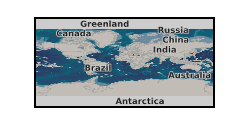University of Oregon
Type of resources
Available actions
Topics
Keywords
Contact for the resource
Provided by
Years
Formats
Update frequencies
-

MFIX (Multiphase Flow with Interphase eXchanges) simulation input files and raw particle output files. The study was published in Breard, E. C., Fullard, L., & Dufek, J. (2024). Rheology of granular mixtures with varying size, density, particle friction, and flow geometry. Physical Review Fluids, 9(5), 054303. Description of files 1. Input particle input file (*.dat) 2. VELOCITY* and FORCES* files exported at 10 Hz The simulation are all done as pressure-controlled shear cells where the x and z axes are periodic boundaries, and the top and bottom boundaries are solid rough plates. The simulations are split in three types: MONODISPERSE, BIDISPERSE and TRIDISPERSE, where particle size (in mm), is indicated in the naming of the directory. The, in each set of simulation, the naming is with the following structure: 20N_0.0001ms, where the first number indicates the confining pressure (20 Newtons) and the second indicate the top plate moving velocity in the x-direction (0.0001 m/s). Note the simulations were run with MFIX-18. The MFIX code that is modified from the core code from the Department of Energy (DOE) is all present. The missing core code can be downloaded from the DOE department https://mfix.netl.doe.gov/.
-

MFIX (Multiphase Flow with Interphase eXchanges) simulation input files and raw particle output files. Description of files 1. The directory "MFIX_Setup" contains the MFIX simulation input files for the two simulations Exp19 and Exp35. (MFIX input file (input and boundary conditions) *mfx & MFIX subroutines (*f) and geometry *stl) 2. The directory "time-averaged_slices" contain the time-average slices as *vtu files for Exp19 and Exp35 that can be opened using Paraview (open-source software). 3. The directory "depth-averaged and time-averaged data" contains the python code that reads the depth- and time-averaged data. Note the simulations were run with MFIX-20. The two simulation (Exp19 and Exp35) are 3D two-fluid model (TFM) numerical simulations of liquid-particle mixture, where the fluid and particles are saline water and silica particles, respectively. The finite-volume method is used to solve the mass, momentum and energy equations of the two phases and the solid-fluid coupling is done using drag and pressure terms. The MFIX code that is modified from the core code from the Department of Energy (DOE) is all present. The missing core code can be downloaded from the DOE department https://mfix.netl.doe.gov/.
-

MFIX (Multiphase Flow with Interphase eXchanges) simulation input files and results of simulation of fragmentation-induced fluidization, and laboratory analyses of volcanic pyroclastic density current material. The data consists of: 1) the Fortran90 input files for the MFIX (Multiphase Flow with Interphase eXchanges) TFM simulation runs, 2) the postprocessed MFIX results from our simulations present within Excel sheets 3) laboratory results on the particle shape, size distribution and porosity of the volcanic granular mixtures, presented within Excel sheets. The dataset presented was gathered to investigate the role of compaction, resulting from particle fragmentation, within volcanic granular flows known as pyroclastic density currents. The presented results were obtained from a combination of laboratory analyses and numerical modelling, using Computational Fluid Dynamics. In the laboratory, characterization of the particle size distributions and shape of volcanic grains was undertaken to understand their packing properties. Using the Two-Fluid Model (TFM), an Eulerian-Eulerian method, I was able to simulate the effect of particle breakage on natural scale volcanic mixtures. This model supports a broad range of capabilities for dense multiphase flow. The code was used to investigate the role of particle breakage in pyroclastic density currents, which alters the maximum packing of the granular mixture and ultimately the concentration of the flow during transport. Because the solid phase is immersed in air, the code allowed me to simulate the self-fluidization of the volcanic mixture and the effect on its flowability. These simulations enable me to propose a new process that can play a large role in the occurrence of long runout deadly pyroclastic density currents: Fragmentation-Induced Fluidization. The laboratory work was conducted at the University of Oregon (USA) while the numerical work was completed by running the simulations on the UKRI ARCHER2 HPC and the Talapas Cluster from the University of Oregon (US). The data processing was ongoing from August 2021 to December 2021 (Lab analyses) and February 2022 to August 2022 (HPC work). The MFIX simulation results have been post-processed using ParaView open-source software but can be reproduced by the user using the MFIX custom-changed subroutines and input files contained within the dataset. The data was collected to test the hypothesis that compaction, and subsequent self-fluidization is key to the long-runout of pyroclastic density currents. Specialized audience that work on granular media and volcanic flows. The MFIX code that is modified from the core code from the Department of Energy (DOE) is all present. The missing core code can be downloaded from the DOE department https://mfix.netl.doe.gov/. All the experimental data from lab experiments are presented.
 NERC Data Catalogue Service
NERC Data Catalogue Service